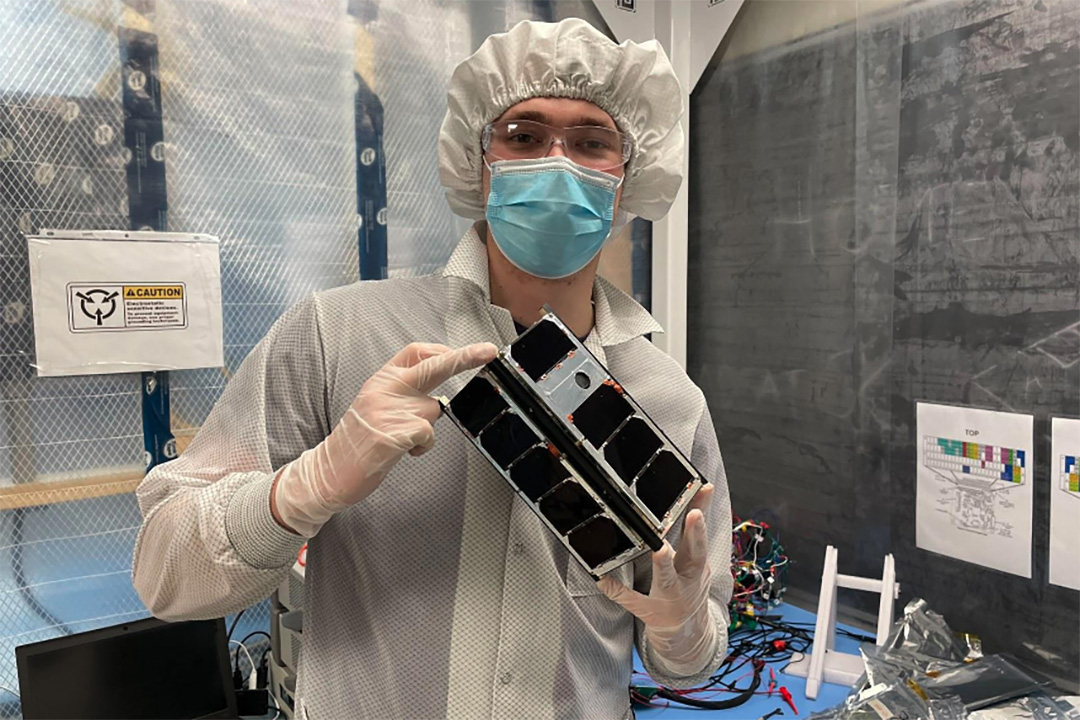
First made-in-Saskatchewan satellite to be launched to the International Space Station
SASKATOON – Students at the University of Saskatchewan (USask) have developed a cube satellite that will launch into orbit on June 3. The team believes it is the first made-in-Saskatchewan satellite that will be sent into space.
The cube satellite, dubbed RADSAT-SK, will be launched to the International Space Station (ISS) via the SpaceX CRS-28 rocket. From the ISS, the satellite will be sent into its own orbit where it will remain for approximately one year. During that time, the team will collect experimental radiation data from a ground station located on the USask campus.
“The RADSAT-SK cube satellite began development in spring 2018 with about 20 engineering undergraduate students on board,” said Dr. Sean Maw (PhD), principal investigator and Jerry G. Huff Chair in Innovative Teaching in the USask College of Engineering. “Since then, the project has grown immensely, with hundreds of students involved in some capacity over the years.”
The creation of the satellite is part of a project for the Canadian Space Agency (CSA) Canadian CubeSat Project (CCP), a program developed by the CSA to increase student interest in STEM across Canada while involving them in real space missions that contribute to the scientific community.
“Finding out as a student at USask that I could be a part of a project that would send a research satellite to space was an opportunity that fulfilled one of my life’s earliest goals,” said Dustin Preece, one of the technical project managers, adding that the cube satellite project has been a life-changing experience for him and many other students involved.
The RADSAT-SK satellite’s payload – what it is carrying as it orbits the Earth – focuses on radiation-based research. USask electrical and computer engineering professor Dr. Li Chen (PhD) and his team developed a dosimeter board to measure radiation from space. Dr. Ekaterina Dadachova (PhD) and her team within the USask College of Pharmacy and Nutrition developed a fungal melanin coating that has been placed on part of the board. Melanin pigments are found in many diverse fungal species which can inhabit some of the most extreme habitats on earth. The research goal of Dadachova’s work is to test the feasibility of melanin as a cosmic radiation shielding method in space, while the goal of Chen’s work is to measure radiation at a reduced cost compared to current methods.
The RADSAT-SK project partners include the CSA, USask Space Design Team, USask College of Engineering, and Saskatchewan Polytechnic. The industry partners are Calian Advanced Technologies and Galaxia Mission Systems, along with numerous individual donors. Dr. Brian Berscheid (PhD) of the USask College of Engineering also contributed mentorship for the team.
-30-
For media inquiries, contact:
Layne Ransom
Human Resources and Communications Project Manager
laynemransom@gmail.com
204-761-3263
Victoria Dinh
USask Media Relations
306-966-5487
victoria.dinh@usask.ca

